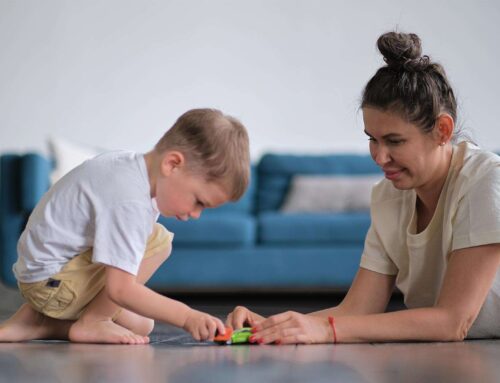Sensory processing, the way our brains receive and respond to sensory information, is often a key aspect of Autism spectrum disorder (ASD). In this blog post, we will delve into the intricate relationship between autism and sensory processing, exploring the challenges and opportunities that arise from unique sensory experiences. ASD is a complex condition that affects how individuals communicate and interact with the world around them.
Sensory Sensitivities and Sensory Overload
Individuals with ASD may experience sensory sensitivities, which means they may be more aware of and react more strongly to sensory stimuli than others. This can include sensitivities to:
-
Sight: Bright lights, fluorescent lights, or certain patterns can be overwhelming for some individuals with ASD.
-
Sound: Loud noises, sudden sounds, or repetitive sounds can cause discomfort and anxiety.
-
Touch: Certain textures, such as clothing tags or sticky substances, can be unpleasant and even painful.
-
Taste and Smell: Strong smells or tastes can be aversive, leading to food selectivity or avoidance of certain environments.
These sensory sensitivities can lead to sensory overload, a state of extreme discomfort and anxiety caused by an excessive amount of sensory input. Sensory overload can manifest in various ways, including:
-
Meltdowns: Overwhelming sensory experiences can trigger meltdowns, characterized by intense emotional outbursts, crying, or self-injurious behavior.
-
Shutdowns: As a coping mechanism, individuals may withdraw from their surroundings, appearing unresponsive or disengaged.
-
Stimming: Repetitive behaviors, such as hand flapping or rocking, may serve as a self-regulating mechanism to manage sensory input.
Sensory Processing Differences: Hyper- and Hypo-Sensitivity
Sensory processing differences in ASD can manifest in two primary ways: hypersensitivity and hyposensitivity.
Hypersensitivity: Individuals with sensory hypersensitivity are overly sensitive to sensory stimuli, finding them overwhelming or even painful.
Hyposensitivity: Conversely, individuals with sensory hyposensitivity may seek out more sensory input, appearing to crave or not react strongly to sensory stimuli.
These sensory processing differences can have a significant impact on daily life, affecting activities like eating, dressing, and socializing.
Supporting Sensory Needs
Understanding and supporting the sensory needs of individuals with ASD is crucial for their well-being and participation in daily life. Here are some strategies that can be helpful:
-
Identify sensory triggers: Collaborate with the individual to identify specific sensory stimuli that cause discomfort or distress.
-
Create a sensory-friendly environment: Minimize or eliminate overwhelming sensory stimuli, providing calming and predictable environments.
-
Practice sensory integration activities: Engage in activities that help regulate sensory processing, such as weighted blankets, deep pressure therapy, or calming music.
-
Seek professional guidance: Occupational therapists and other professionals can provide specialized assessments and interventions to address sensory processing challenges.
Embracing Sensory Differences
While sensory processing differences can present challenges, they can also offer unique opportunities for individuals with ASD. Sensory sensitivities can contribute to heightened awareness and attention to detail, while sensory seeking behaviors can lead to a deeper appreciation of sensory experiences.
By understanding and embracing the sensory differences associated with ASD, we can create a more inclusive and supportive environment for individuals with autism to thrive. Remember, every individual is unique, and their sensory experiences shape their perception of the world.





Leave A Comment